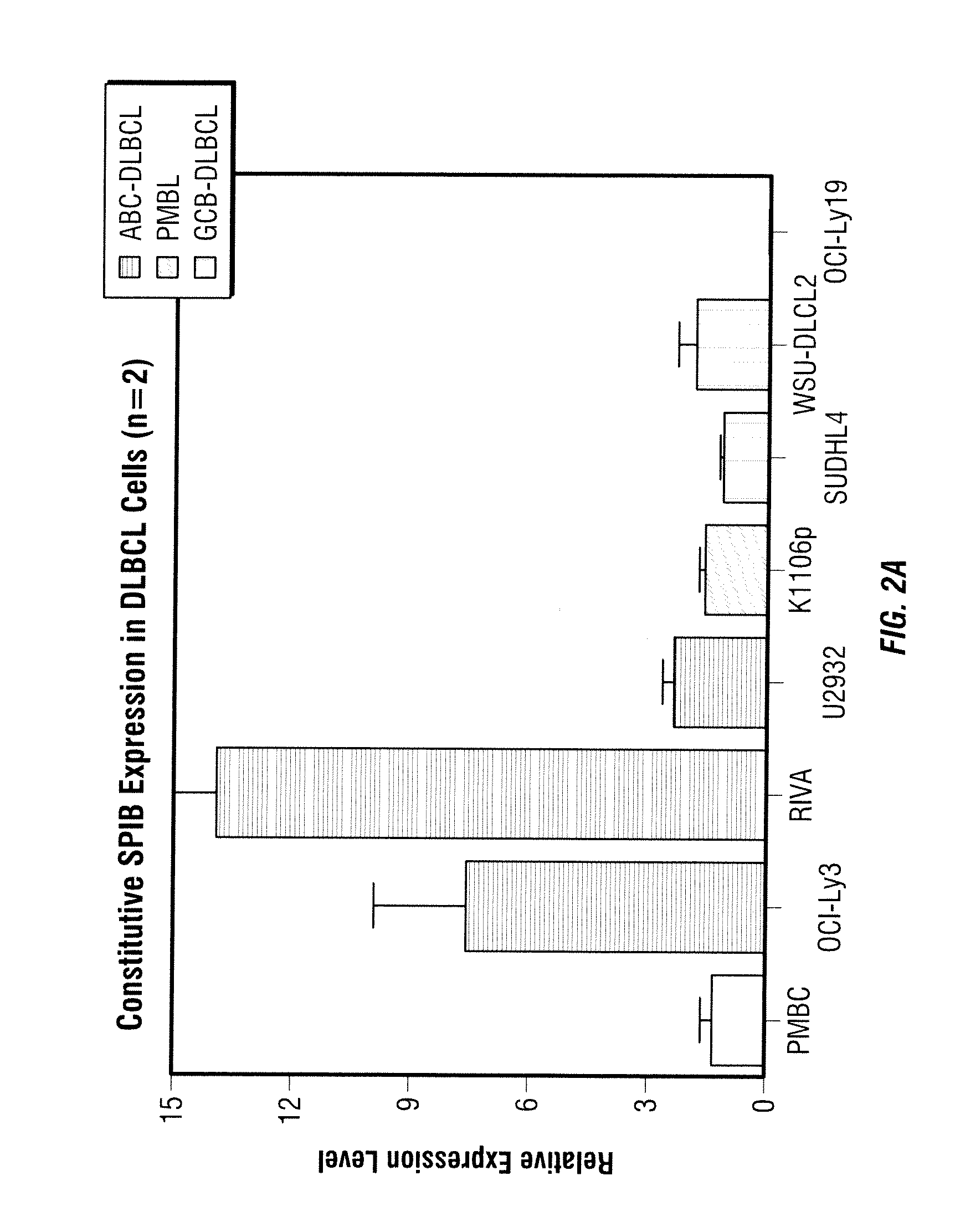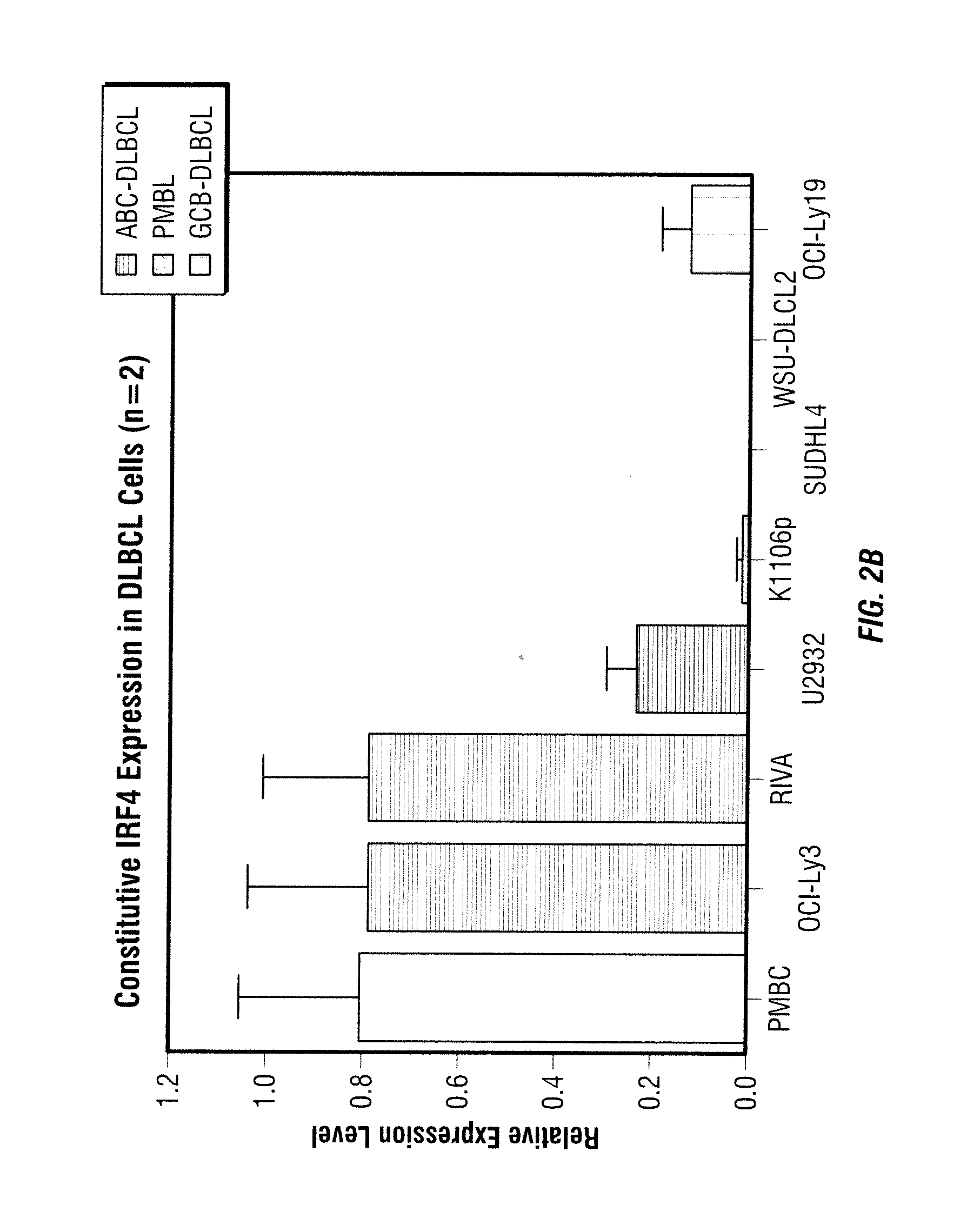Methods for the treatment of non-hodgkin's lymphomas using lenalidomide, and gene and protein biomarkers as a predictor
a non-hodgkin's lymphoma and gene and protein biomarker technology, applied in the direction of antibody medical ingredients, instruments, drug compositions, etc., can solve the problems of not being suitable for patients with a poor performance status or advanced age, approaches pose significant drawbacks for patients, surgery may not completely remove neoplastic tissue, etc., to achieve the effect of monitoring the effectiveness of treatmen
- Summary
- Abstract
- Description
- Claims
- Application Information
AI Technical Summary
Benefits of technology
Problems solved by technology
Method used
Image
Examples
Embodiment Construction
[0051]The methods provided herein are based, in part, on the discovery that the expression of certain genes or proteins associated with the activated B-cell phenotype in non-Hodgkin's lymphoma cells may be utilized as biomarkers to indicate the effectiveness or progress of a disease treatment. In particular, these biomarkers can be used to predict, assess and track the effectiveness of patient treatment with 3-(4-amino-1-oxo-1,3-dihydro-isoindol-2-yl)-piperidine-2,6-dione.
[0052]Without being limited to a particular theory, immunomodulatory compounds such as 3-(4-amino-1-oxo-1,3-dihydro-isoindol-2-yl)-piperidine-2,6-dione can mediate growth inhibition, apoptosis and inhibition of angiogenic factors in certain types of cancer such as non-Hodkin's lymphoma. Upon examining the expression of several cancer-related genes in several cell types before and after the treatment with 3-(4-amino-1-oxo-1,3-dihydro-isoindol-2-yl)-piperidine-2,6-dione, it was discovered that the expression levels o...
PUM
| Property | Measurement | Unit |
|---|---|---|
| weight percent | aaaaa | aaaaa |
| weight percent | aaaaa | aaaaa |
| weight percent | aaaaa | aaaaa |
Abstract
Description
Claims
Application Information
 Login to View More
Login to View More - R&D
- Intellectual Property
- Life Sciences
- Materials
- Tech Scout
- Unparalleled Data Quality
- Higher Quality Content
- 60% Fewer Hallucinations
Browse by: Latest US Patents, China's latest patents, Technical Efficacy Thesaurus, Application Domain, Technology Topic, Popular Technical Reports.
© 2025 PatSnap. All rights reserved.Legal|Privacy policy|Modern Slavery Act Transparency Statement|Sitemap|About US| Contact US: help@patsnap.com



